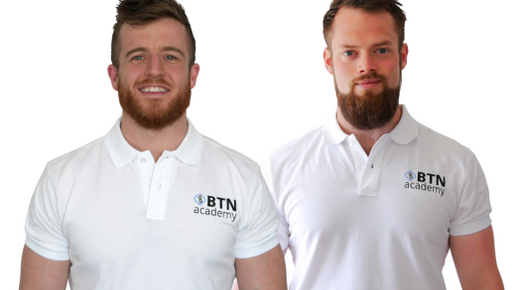
The ‘afterburn effect’ – should we believe the hype?
Posted on | Last updated 13-03-2020It’s extremely common for personal trainers, class attendees, and regular gymgoers to consider the ‘after burn effect’ (properly termed EPOC or excess postexercise oxygen consumption) of exercise when choosing the specific training modality appropriate for a given goal. This effect is also often used for class or training program advertising, and the supposedly higher EPOC of resistance training is commonly used to justify the idea that resistance training (RT) is more effective than steady state cardio (SSC) for fat loss.
But is this true? And what about high intensity interval training (HIIT)?
(To be clear, this article is looking at these training modalities specifically in the context of general population clients. Each of the three training styles HIIT, SSC, and RT have important utility for improving certain areas of physical fitness, which can be important for athletes, but that’s beyond the scope of the discussion here)
A 2015 paper by Greer et al (1) sought to answer these questions in a study that elegantly confirmed some previous findings from other groups. In this study, 10 relatively untrained male college students were recruited and asked not to exercise for 3 days before visiting the lab. Their resting metabolic rate (RMR) was then measured in the evening, they slept at the lab, and it was remeasured in the morning to make sure the researchers could account for circadian rhythm differences. After this they completed a 45 minute bout of RT (Smith Machine Squats, Triceps Extensions, Calf Raises, Pec Flyes, and Lat Pulldowns) with the following setup:
- One set to failure at 60% of 1 repetition max of exercise 1
- One minute rest
- One set of failure at 60% of 1 repetition max of exercise 2
- Repeat as circuits of all 5 exercises for 45 minutes (participants all managed 5 rounds)
This is an odd exercise selection (limited by equipment availability) and an exercise modality not reflective of how many experienced trainees train, but I’ll discuss why that may not matter so much at the end of this piece when we get to application. Roughly 12 and 21 hours after this session (at 9:30pm and 6:30am the following day) RMR was again measured.
7 days later, the participants then completed a session of LISS which involved cycling at roughly 40% VO2max until the same number of calories were burned as in the RT session. RMR was then again measured in the evening and following morning. Finally, 7 days later, participants completed a session of LISS (90% VO2 max for 30 seconds with 120-180 seconds of recovery). Again the session lasted until a similar number of calories were burned as during the RT session and BMR was measured.
The results? The following table shows the average number of calories expended by the participants every 30 minutes at rest, both at baseline and after each training modality. 12 hour EPOC is compared to PM baseline values and 21 hour EPOC is compared to AM values in order to keep comparisons relevant – a huge plus for this study!
| RMR Baseline (PM/AM) | RMR 12 hours after exercise (difference compared to PM RMR) | RMR 21 hours after exercise (difference compared to AM RMR) | |
| Resistance training | 50kcal/38kcal | 58kcal (+8kcal) | 45kcal (+7kcal) |
| Steady state cardio | 50kcal/38kcal | 50kcal (+0kcal) | 39kcal (+1kcal) |
| High intensity interval training |
50kcal/38kcal
|
62kcal (+12kcal)
|
45kcal (+7kcal) |
As you can see, the EPOC for RT is indeed higher than SSC, with HIIT coming out on top – indeed the researchers predicted that this effect would last for roughly 48 hours, with participants doing RT or HIIT burning roughly 300kcal per day during that time more than they did after doing SSC which is certainly not to be sniffed at!
In total, including burning roughly 200kcal in the session, the calorie burn for each over the course of 48 hours was estimated to be:
- Resistance training – 800kcal
- Steady state cardio – 250kcal
- High Intensity Interval Training – 800kcal
But here’s the rub: how can this be applied?
The problem with taking this and similar studies and using it to make decisions around training lies in the details.
First of all, as noted earlier, during the SSC and HIIT sessions participants were stopped when they burned the same number of calories as they did during RT. This is a really good step by the researchers to keep things the same and so is scientifically valid, but it’s not necessarily real-world applicable because – simply – that’s not how anyone trains.
HIIT training is exhausting, and so sessions are limited simply by fatigue – a 20-30 minute interval session (of which the majority of your time will be spent resting) may burn roughly the number of calories seen in the study here – perhaps a little more – but as for SSC? You can do that for a LONG time, so while the EPOC may indeed be lower, the total calories burned during SSC will be significantly higher than reported in this study simply due to duration of the exercise bout. Burning 600kcal in an hour by pedalling away on a bike doesn’t impact recovery nearly so much as 30 minutes of HIIT does, either meaning you can do it more often.
Next, we need to look at the participants in this study, who were relatively untrained men. As I noted earlier the resistance training protocol was a little weird to say the least, which could leave us wondering whether the results here are relevant to people who train more realistically with free weights – but that’s not the biggest issue with directly applying these findings – the biggest issue is the repeated bout effect. As the researchers noted in the study itself, it’s likely that one of the primary drivers of EPOC after RT is the muscle damage associated with the training itself, but this is massively reduced by the repeated bout effect – meaning that over time after doing the same exercises less damage is done (muscle damage, contrary to popular believe, isn’t a primary or even particularly important driver of hypertrophy, but that’s another article for another day). As such, the researchers predicted that the EPOC associated with RT will decrease with training experience, rendering it less and less important over subsequent training sessions.
In short, after the first few training sessions, RT doesn’t create much of an EPOC at all!
They then noted that the EPOC associated with HIIT is largely due to elevated sympathetic nervous system tone (the fight or flight response) which is reduced over time as a person becomes trained. As such, while there are other reasons for EPOC after this kind of training, they note that it is a distinct possibility that the total calories burned in the after-burn effect from HIIT training also reduces after you’ve done it a few times.
Then, we need to look at things in the context of our client’s lives as a whole. We know categorically that resistance training is a critical component of any healthy lifestyle, either due to its effect on bone density and connective tissue strength, on muscle retention during fat loss or in older age, in muscle and strength development, or because it can reduce or prevent back pain.
This means that while EPOC may be interesting (despite it probably disappearing within a month or two of training), it’s far from the primary reason why we should be talking to our clients about RT. Indeed, it’s not even the main reason to do it when fat loss is the goal, thanks to the aforementioned muscle protective properties!
As for HIIT training – this can be extremely useful for clients who are short on time. It’s also a little more fun than SSC training, but it’s not as effective as RT for muscle retention (what protects muscle during weight loss is mechanical tension) while being similarly fatiguing, and so any benefit needs to be weighed up against its effect on subsequent training sessions. While EPOC may be higher than SSC, as noted this will decrease over time and the total calorie burn during the session itself will more than likely be higher for the lower intensity form of training meaning that an equalling out of overall calorie burn for both kinds of cardio is probable, but one form is more likely to impact upon RT performance and recovery.
And finally we also need to remember that exercise doesn’t happen in isolation. All three forms of exercise increase general fatigue which can reduce day to day movement (fidgeting etc) which, itself, burns a significant number of calories. Exercising over a certain amount also increases appetite – as such, while it’s an important part of an overall healthy lifestyle and it can increase adherence, adopting the mindset of exercising to burn calories, thus exercising as much as possible (rather than as much as is effective for health and fitness) leads to increased appetite and fatigue – counterintuitively making fat loss harder!
So, where does this leave us?
- RT and HIIT have a higher EPOC than SSC, though in the real world SSC will enable a client to burn more calories during the session itself
- After repeated sessions the EPOC for both RT and HIIT is likely to diminish significantly if not completely
- Exercising for calorie burn (rather than health or fitness) may be short sighted to begin with
Leave fat loss to their nutrition.
Reference: Greer, B. K., Sirithienthad, P., Moffatt, R. J., Marcello, R. T., & Panton, L. B. (2015). EPOC Comparison Between Isocaloric Bouts of Steady-State Aerobic, Intermittent Aerobic, and Resistance Training. Research Quarterly for Exercise and Sport, 86(2), 190–195. doi:10.1080/02701367.2014.999190
Our Nutrition Podcast

Join Tom and Ben from BTN on Ben Coomber Radio to learn all about nutrition, performance, health, and the latest science. A mix of guest and co-hosted shows. You'll learn a ton.
Listen now